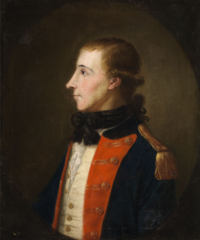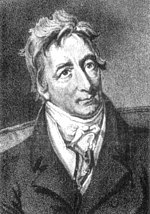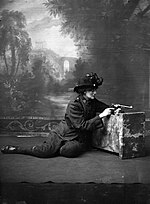Protestant Irish nationalists
This article has multiple issues. Please help improve it or discuss these issues on the talk page. (Learn how and when to remove these template messages)
|

Protestant Irish Nationalists are adherents of
Despite their relatively small numbers, individual Protestants have made important contributions to key events in Irish nationalist history, such as
In Northern Ireland, the vast majority of Ulster Protestants are unionist and vote for unionist parties. In 2008, only 4% of Protestants in Northern Ireland thought the long-term policy for Northern Ireland should be unification with the Republic of Ireland, whereas 89% said it should be to remain in the United Kingdom.[1]
All the various denominations of Protestantism in Ireland have had members involved in nationalism. The Anglican
Pre-Union background

In the eighteenth century the first attempt towards a form of greater Irish home rule under the British Crown was led by the Irish Patriot Party in the 1770s and 1780s, inspired by Henry Grattan.
The
At that time, the French republicans were
During the 1798 rebellion the military leaders were also largely Anglicans. After the initial battles in
From Emmet to the Fenians
In 1803 Robert Emmet, brother of Thomas Addis Emmet, attempted an insurrection in Dublin. Jemmy Hope tried to raise the districts of the north where the Presbyterian spirit of republican resistance had run strongest in the 1790s, but found no response.
The democratic and non-violent
In 1845 Davis famously clashed with O'Connell over "the Liberator's" denunciation of the "Queens Colleges", a "mixed" or non-denominational scheme for advanced education in Ireland. When Davis pleaded that "reasons for separate education are reasons for [a] separate life", O'Connell accused him of suggesting it a "crime to be a Catholic". "I am", he declared, "for Old Ireland, and I have some slight notion that Old Ireland will stand by me".[5][6]
In the election of 1852 John Gray, then editor of the Freeman's Journal, at the urging of the Reverend David Bell stood on the platform of Tenant Right League in Monaghan. Bell found his appeals for unity in support of Gray could not prevail against calls of the Union in danger, and "No Popery". Of the 100 of his fellow Presbyterians who had signed the requisition asking Gray to stand, only 11 had the courage to vote for him. Despairing of constitutional means, in 1864 Bell was inducted into the Irish Republican ["Fenian"] Brotherhood by Jeremiah O'Donovan Rossa.[7] Escaping arrest, from 1865 he was in exile in the United States where, in contrast to John Mitchel who, already in Ireland, had defended American slavery against the abolitionism of Daniel O'Connell,[8][9] Bell tried to associate physical-force Irish republicanism with the Radical [U.S.] Republican agenda of black enfranchisement and Reconstruction.[10]
Home Rule era (1870–1914)
Politicians

The new
Other Protestant Nationalist members of parliament were:
In 1903, with
Several Protestant figures in the early Northern Ireland Labour Party were nationalists. These included MPs Jack Beattie, Sam Kyle and William McMullen and labour leaders James Baird and John Hanna.[12] Meanwhile, trade unionist Victor Halley was a member of the Socialist Republican Party.
Artists
While not active nationalist supporters, authors who wrote about Irish life and history, such as
From 1897 the artist and mystic
Russell was also involved in the "Irish Literary Revival" (or Celtic Twilight) artistic movement, that provided an intellectual and artistic aspect supportive of Irish nationalism. This was also largely started and run by Protestants such as W. B. Yeats, Lady Gregory, Seán O'Casey, Alice Milligan, and JM Synge, who also founded the influential but controversial Abbey Theatre that opened in 1904. "An Túr Gloine" (The Glass Tower) had a similar membership.
The archetypal work of art that commemorated the 1916 Rising, though sculpted five years before the rising, is the statue of the dying mythical warrior
Independence era (1916–1922)

Sam Maguire inducted Michael Collins into the Irish Republican Brotherhood (IRB) in 1909. From 1928 the main prize for Irish football awarded by the Gaelic Athletic Association has been the Sam Maguire Cup.
In 1908 Bulmer Hobson and Constance Markievicz founded the Fianna Éireann, intended as a nationalist Boy Scout movement. The Irish Volunteers were a paramilitary organisation established in 1913 by Irish Nationalists and separatists including Roger Casement, Bulmer Hobson and Erskine Childers, all Protestant Irish nationalists (although Casement, who had been secretly baptised a Catholic by his mother, officially converted to Catholicism just before he was hanged in 1916). The Irish Volunteers were formed in response to the formation of the Ulster Volunteers by Edward Carson and James Craig. The Ulster Volunteers were a Unionist paramilitary movement who feared a Dublin-centric, anti-Protestant Home Rule parliament in Dublin.
The
In the subsequent
Following independence, southern Protestant unionists accepted the new reality and worked with the new Free State from its difficult start in 1922–23. These included judges such as
1940s
In 1941, writer
The Club was mainly frequented by Protestants but, as the authorities soon discovered, it was a source of recruits to the IRA. UUC meetings were being attended by John Graham, a devout member of the Church of Ireland, who, at the time of his arrest in 1942, was leading a "Protestant squad", an intelligence unit, that was preparing the armed organisation for a new "northern campaign."[18] In 1944, under Northern Ireland Special Powers Act, the UUC was suppressed. The club's premises, and the homes of Ireland and other prominent members (among them Presbyterian clergymen, teachers and university lecturers) were raided by RUC Special Branch.[19]
Along with George Gilmore, and George Plant, Graham had been amongst a handful of Protestants who had come to the IRA through the minority Republican Congress.[12] Plant was executed in 1942 by the Irish government for the murder of a suspected informer.[20]
In 1948 Denis Ireland entered the
During the Troubles
In the North, Protestants participated in the early years of the nationalist
Billy Leonard, a former Seventh-day Adventist lay-preacher and Royal Ulster Constabulary (RUC) reservist, whose wife and children are Catholics, was elected in 2001 to Coleraine Borough Council as an SDLP representative for the Skerries area.[21] Citing lack of emphasis on Irish unity he joined Sinn Féin in 2004. The party nominated him to succeed Francie Brolly as an MLA for East Londonderry in 2010.[22] But citing disagreements "over support arrangements for MLAs' wages and expenses",[23] and complaining that "the tentacles of the [IRA] Army Council still run throughout" the republican party he soon resigned.[24]
Also assassinated by the UDA in 1980, John Turnley, scion of a wealthy Protestant family and a former British Army officer, joined in SDLP in 1972. At the time he was killed, Turnley was chairman of the Irish Independence Party, co-founded with Frank McManus (former Unity MP for Fermanagh & South Tyrone) and Fergus McAteer (son of the former Nationalist Party leader Eddie McAteer).,[27] and a leading member of the National H-Blocks Committee supporting the IRA blanket protest.
Jim Kerr, born into a middle-class Protestant family in
Noel Jenkinson, from a
David Russell was a Protestant
Republic of Ireland
Martin Mansergh, a member of the Church of Ireland, has been influential in formulating Fianna Fáil's policy on Northern Ireland since the peace process began in the 1990s. Sinn Féin TD for Clare Violet-Anne Wynne is Protestant. Presbyterian Fine Gael TD Heather Humphreys has referred to herself as a republican and nationalist on several occasions.[36]
Protestant nationalist converts to Roman Catholicism
A number of Protestant nationalists also converted to Catholicism, for a variety of reasons:
- Lord Ashbourne
- Ada Beesley, the second wife of John Redmond
- Thomas Bennett
- Charles Bewley
- Joseph Biggar MP
- Aodh de Blácam (né Harold Blackham)[37]
- Roger Casement
- Lillie Connolly, widow of James Connolly[38]
- Viscount French(Lord Lieutenant of Ireland 1918–21)
- Victor Fagg, prominent Irish republican (converted to Catholicism in 1943 to marry Una Daly, a member of the women's IRA group, Cumann na mBan[39][40])
- Father Patrick Fell, a Roman Catholic convert accused and later convicted in the 1970s of being a commander of an Provisional Irish Republican Army (IRA) active service unit; later became a priest.
- Mabel McConnell FitzGerald, wife of Desmond FitzGerald and mother of Garret FitzGerald
- Grace Gifford, sister of Muriel, wife of Joseph Plunkett
- Katherine Anna ("Katie") Gifford, Mrs Wilson (1875–1957), Irish republican, civil servant, and teacher; sister of Grace and Muriel Gifford[41]
- Muriel Gifford, sister of Grace, wife of Thomas MacDonagh
- Maud Gonne, wife of John MacBride, mother of Seán MacBride, and mother-in-law of Francis Stuart
- Edmund Dwyer Gray, son of the Protestant nationalist, Sir John Gray
- Hugh Law MP and TD
- Shane Leslie
- Seán Mac Stíofáin, born John Edward Drayton Stephenson in England to an English Protestant father and a mother of Ulster Protestant and Unionist.[42]
- Constance Markievicz MP (abstentionist) and TD, first female elected as both
- Pierce Charles de Lacy O'Mahony MP
- Gertrude Bannister Parry (cousin of Roger Casement)
- James Pearse, father of Home Rule) before marrying Margaret Brady (who, with her daughters, shared her sons' political beliefs and all became political activists)
- William Stockley
- Francis Stuart, son-in-law of Maud Gonne
See also
- Alliance Party of Northern Ireland
- Catholic Unionist
- Unionism in Ireland
- Irish Unionist Party
References
- ^ "Northern Ireland Life and Times Survey 2008". Ark.ac.uk. 4 June 2009. Retrieved 9 January 2010.
- ^ "World Council of Churches". Oikoumene.org. Archived from the original on 5 September 2011. Retrieved 9 January 2010.
- ^ "Presbyterian Church of Ireland". Presbyterianireland.org. Archived from the original on 27 September 2009. Retrieved 9 January 2010.
- ^ Dennis Gwynn, O'Connell, Davis and the Colleges Bill, Cork University Press, 1948, p. 68
- ISBN 9781856355964.
- ISBN 0813213037.
- S2CID 165479361. Retrieved 3 October 2020.
- ^ Duffy, Charles Gavan (1883). Four Years of Irish History, 1845-1849. Dublin: Cassell, Petter, Galpin. pp. 500–501. Retrieved 4 September 2020.
- ^ Gleeson, David (2016) Failing to ‘unite with the abolitionists’: the Irish Nationalist Press and U.S. emancipation. Slavery & Abolition, 37 (3). pp. 622-637. ISSN 0144-039X
- S2CID 159525524. Retrieved 9 October 2020.
- ^ ISBN 9781909556065.
- ^ a b Michael Farrell, Northern Ireland: The Orange State
- ^ *Plunkett Foundation history Archived 15 May 2008 at the Wayback Machine
- ^ "Directory of Members - 1919 - 2018 - Houses of the Oireachtas - Tithe an Oireachtais". www.oireachtas.ie.
- ^ "Ulster Union Club. A new Protestant movement." Irish Times, 19 February 1941.
- ^ Ulster Union Club. What is the Ulster Union Club? Belfast, Ulster Union Club. 1941).
- ^ Guy Woodward (2015), Culture, Northern Ireland and the Second World War. Oxford University Press. p. 221
- ^ Coogan, Tim Pat (2002). The IRA. London: Macmillan. p. 178..
- ^ Boyd, Andrew (2001). IRepublicanism and Loyalty in Ireland. Belfast: Donaldson Archives. p. 45.
- ^ Moroney, Michael (1988). "George Plant & The Rule of Law: The Devereux Affair (1940–42)". Tipperary Historical Journal: 1–12. Retrieved 13 March 2012.
- ^ "Coleraine Council Elections 1993-2011". www.ark.ac.uk.
- ^ "Ex RUC man becomes Sinn Fein MLA", BBC News, 19 November 2009.
- ^ How Orange RUC man joined and left Sinn Fein, Belfast Newsletter, 25 July 2012.
- ^ "IRA still have a big say in Sinn Fein says ex MLA and RUC man", belfasttelegraph.co.uk, 21 June 2012; retrieved 11 August 2012.
- ^ Beresford, David (16 October 1980). "Leading Republicans Killed in Belfast". The Guardian. London. p. 1.
- ^ "Beginning of the End". Irishdemocrat.co.uk. Retrieved 9 January 2010.
- ^ Irish Independence Party Irish Election Literature
- ^ "The life of Republican Socialist Jim Kerr", Sam McGrath, 30 June 2021.
- ^ Brian Hanley and Scott Millar, The Lost Revolution: The Story of the Official IRA and the Workers' Party. Penguin UK, 2009.
- ^ Sutton, Malcolm. "CAIN: Sutton Index of Deaths". cain.ulst.ac.uk.
- ^ "Two Are Shot Dead in Belfast As Factions in the I.R.A. Feud". The New York Times. November 1975.
- ISBN 9780141935010– via Google Books.
- ^ McDonald, Henry; Holland, Jack (29 June 2016). "I.N.L.A - Deadly Divisions". Poolbeg Press Ltd – via Google Books.
- ^ "Humiliating the IRA was a fatal mistake". 12 November 2020.
- ^ The Belfast Telegraph, 3 February 1981.
- ^ "Heather Humphreys: 1916 commemorations belong to all". Irish Times. 31 March 2015. Retrieved 4 October 2021.
- ^ "Aodh de Blacam notes". Ricorso. 15 September 1991. Retrieved 9 January 2010.
- ^ Profile, GoneButNotForgotten.ie; accessed 3 June 2020. Archived 16 July 2007 at the Wayback Machine
- ^ Flanagan, Eimear (12 September 2019). "My grandfather helped form the Provisional IRA". BBC News.
- ^ Fagg, Morgan. "'The IRA was formed in my grandad's sitting room'". The Irish Times.
- ^ Katie Gifford: "Born 28 February 1875 at 12 Carlisle Avenue, Donnybrook, Co. Dublin, second child of Frederick and Isabella Gifford. She graduated from the RUI with an honours BA (1898), one of the first generation of Irish women to receive university education. A gifted linguist, she was fluent in several languages. She married (1909) Walter Harris Wilson, six years her junior, and went to live with him in his native Wales; they had no children. She converted to Roman catholicism [sic] on her marriage. After his death in the 1918 influenza epidemic, she returned to Ireland and became active in Sinn Féin and Cumann na mBan. As registrar of the first dáil loan, she worked closely with the finance minister, Michael Collins. She stood unsuccessfully in a north Dublin ward in the 1920 municipal elections. She was arrested in early 1923 during the civil war, because, according to family tradition, she was mistaken for her better known and more politically active sister Grace; however, she continued to be detained after Grace's arrest. Imprisoned in Kilmainham jail and the North Dublin Union, Katie, probably owing to her education, maturity of years, and skills in negotiation, was appointed a prisoners' CO, serving on the Cumann na mBan prisoners' council. She was released in September 1923, one month after Grace's release."
- ^ "Seán MacStiofáin". The Telegraph. 18 May 2001.
Sources
- O'Broin, Leon; Protestant Nationalists in Revolutionary Ireland, Barnes & Noble 1985, ISBN 978-0-389-20569-2
